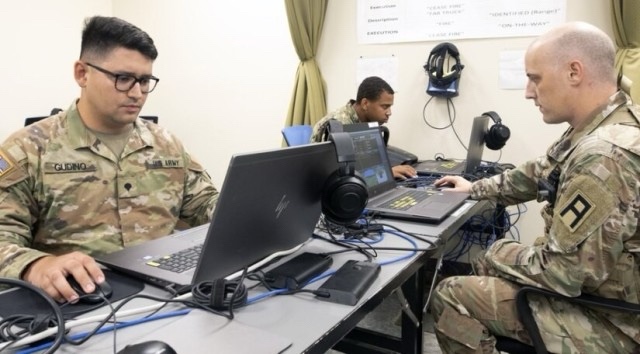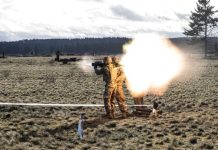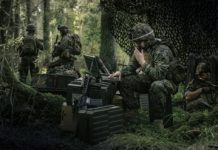
ROCK ISLAND ARSENAL, Ill. — First Army is leveraging the potential of artificial intelligence during large scale mobilization exercises and other missions.
Lt. Col. Melissa Sayers, First Army operations research systems analyst, or ORSA, said the first use will come during the 2024 iteration of Pershing Strike, First Army’s annual exercise to validate the Army’s ability to mobilize forces in support of large-scale combat operations.
The use will be limited but by the following year, the plan is for it be an integral part of the exercise and other First Army operations. It is forecasted to eventually be a routine part of how First Army does business. The hope, Sayers said, is that, “not only do will we have a simulation that we can run a million scenarios on but it’s part of our everyday operations, helping us get to decisions faster.”
Artificial intelligence is the use of computer systems to perform tasks that traditionally require human input and do them much faster. For First Army, faster information would lead to a boost in efficiency during operations that move a multitude of Soldiers and equipment to an assortment of locations across the country for training and mobilization.
“The machine can’t do it without the human,” Sayers noted. “Say we had a large-scale mobilization operation and we had all these units ready to head out the door and the medical unit shows up at 50 percent strength. With AI, we have the ability to pre-calculate solutions. We estimate what is going to happen if you make this decision, and we can go ahead and run it and calculate all those different decisions and have the best three or four recommended to the commander. The commander still makes the decisions but we can get there a lot faster if we have it pre-calculated and ready to run when something happens.”
AI is used in all manner of situations, from customer service to medical diagnoses to traffic patterns. At First Army, the plan is for it to create more efficient operations in exercises and mobilizations, including a large-scale mobilization operation if such an event arises.
“That’s what First Army cares about,” Sayers said. “We want to be able to push out the Reserve Component in a timely manner in event of a large-scale conflict. Once you have the model created, you can start playing with it. It helps leaders at very high levels figure out what levers to pull and what resources to apply to maximize what’s happening on the ground.”
Sayers noted the positive impact this can have for units of any size and the individual Soldiers.
“We have units full of people that need to be processed,” she said. “They need to arrive at their home station, they need to make sure they have all their equipment. What does it take to get the equipment fully maintained? What does the shipping network look like? How many observer coach/trainers should we have and of what flavor — do we need aviation, medical, infantry? How many medical stations? What if one of those stations goes down? What if one shows up at only half-strength? What happens at that location and what are our options to react to that problem. We can plot all this out.”
Partially due to the value of AI, First Army added an ORSA this year. “Anytime First Army has needed to do advanced analytics, it’s had to outsource it,” Sayers said. “They’ve never had anyone inhouse to advise the command and do the work.”
It’s a microcosm of what’s talking place across the Army.
”The ORSA role has exploded in the last couple of years,” Sayers said. “We’ve been limited on what we’re able to provide to the commands because the amount of data was not there to do deep qualitative analysis. Suddenly all this data is able to be collected because we have the hardware to be able to store it and we have the hardware to be able to collect it.”
Because of that, First Army and its partners will be better equipped to provide combatant commanders with trained and ready Reserve Component Soldiers.
By Warren Marlow
You can skip to the end and leave a response. Pinging is currently not allowed.








